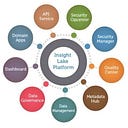Digital Twin
A digital twin refers to a digital replica or model of a physical entity or system. In the context of supply chain, a digital twin architecture is a digital representation of the entire supply chain, from raw materials sourcing, through production and delivery, to customer satisfaction.
This digital twin can provide a comprehensive view of the supply chain and can be used to simulate, predict, and optimize supply chain performance. By leveraging data analytics, machine learning, and other advanced technologies, the digital twin can provide insights into potential issues, opportunities for improvement, and the impact of proposed changes.
Here is a simple outline of a supply chain digital twin architecture:
- Data Collection: This is the base of the architecture. Data is collected from all parts of the supply chain in real-time. This data could be from IoT devices, enterprise resource planning (ERP) systems, customer relationship management (CRM) systems, and other sources.
- Data Processing and Storage: The collected data is processed and stored in a suitable manner for further analysis. This might involve data cleaning, integration, and transformation.
- Digital Twin Model: This is a digital replica of the physical supply chain. It could be a simple static model or a more complex dynamic model that can change and adapt over time. The model is built using the processed data.
- Analytics and Simulation: This layer involves analyzing the data and simulating different scenarios. Advanced analytics techniques and algorithms are used to gain insights from the data. These insights can be used to make predictions and optimize supply chain operations.
- Visualization and Decision Support: The results from the analytics and simulation stage are visualized to make it easy for decision-makers to understand. This can support decision-making by providing insights into the potential impact of different decisions.
- Integration and Action: Finally, the insights gained from the digital twin are integrated back into the supply chain. This could involve making changes to supply chain processes, strategies, or systems.
The digital twin can be a powerful tool for supply chain management, providing a holistic view of the supply chain and enabling more informed, data-driven decision-making. However, implementing a digital twin architecture can be complex and requires a significant investment in technology and skills.
